

This pilgrimage route has many names, and one is the Camino de Tineo. I don't know why. The town's fifteen minutes of fame in Spanish history have come and gone. Nowadays the district is known for its dairies, which produce the largest quantity of milk in the Asturias, and also for its production of smoked meats, mainly chosco, a fine pork sausage, and morcilla (known to other Europeans as blutwurst, boudin noir, or black pudding). The town of Tineo has a small, cramped casco antiguo, a Museum of Gold in the Asturias, and very little else of tourist interest in town. Above all, however, it has a new, spotless, and well-situated Albergue de Peregrinos.
Reaching Tineo from Salas is about a five hour walk in good weather. For me, the trek from Bodenaya was a slower slog in a constant drizzle, but I had the company of two Sevillano couples, whose spirits could not be dampened. This was the first time I'd spent any time in the company of Spanish pilgrims, and I realized how much I'd been missing. They were a constant delight. They were also crazy: on arriving at Tineo, they decided that four hours on the road in the rain was not enough, and that they would continue on as far as Borres, another 15 km and probably another four to five hours ahead, wet feet and all. I stopped at the Albergue and was very happy for the chance to dry out.
| Wet Day on the Trail |
Cariña at a coffee stop |
Javier, getting back to it! | Mountain Grist Mill |
Upper Tineo | Tineo's Albergue |
|---|---|---|---|---|---|
 |
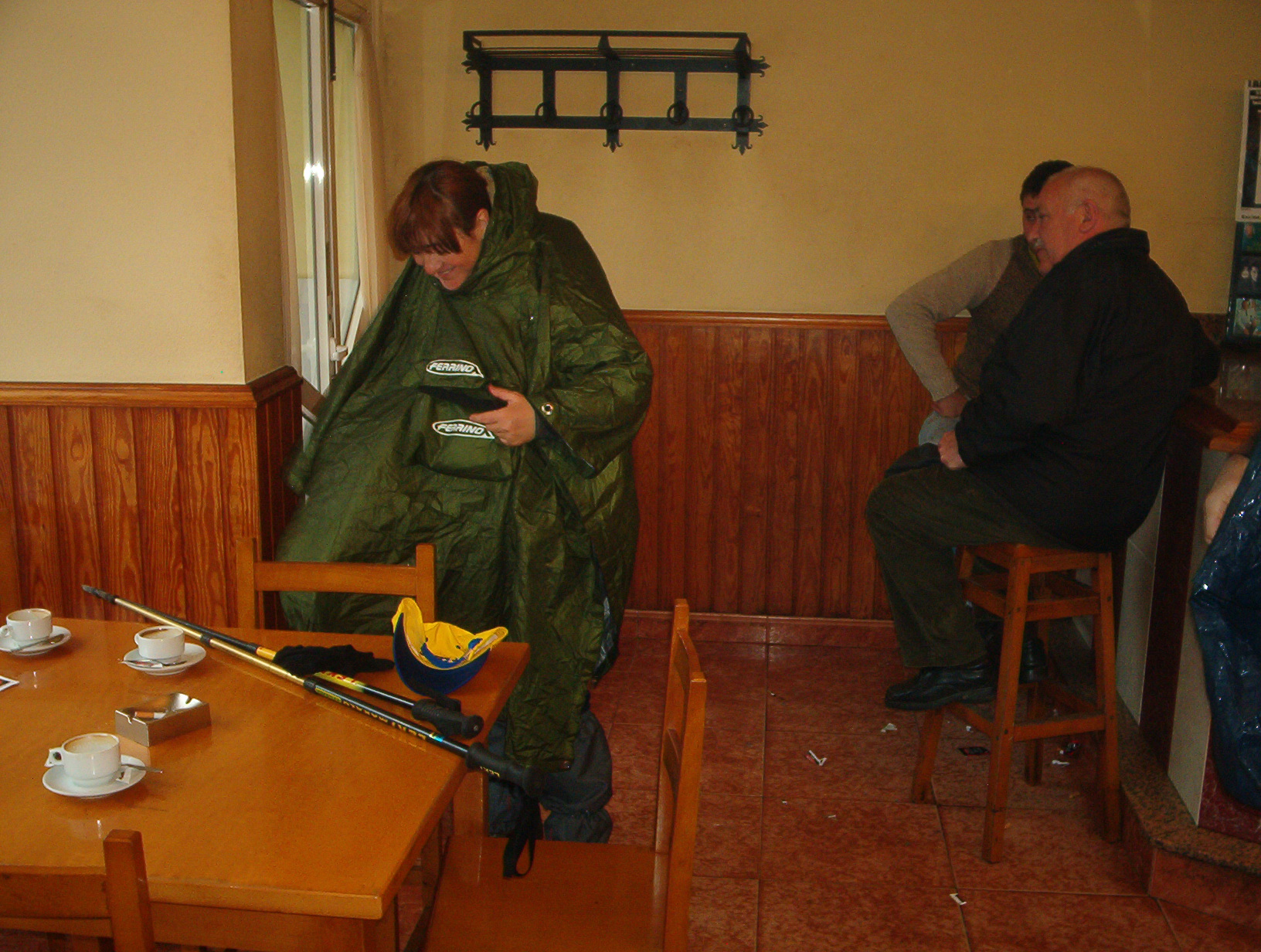 |
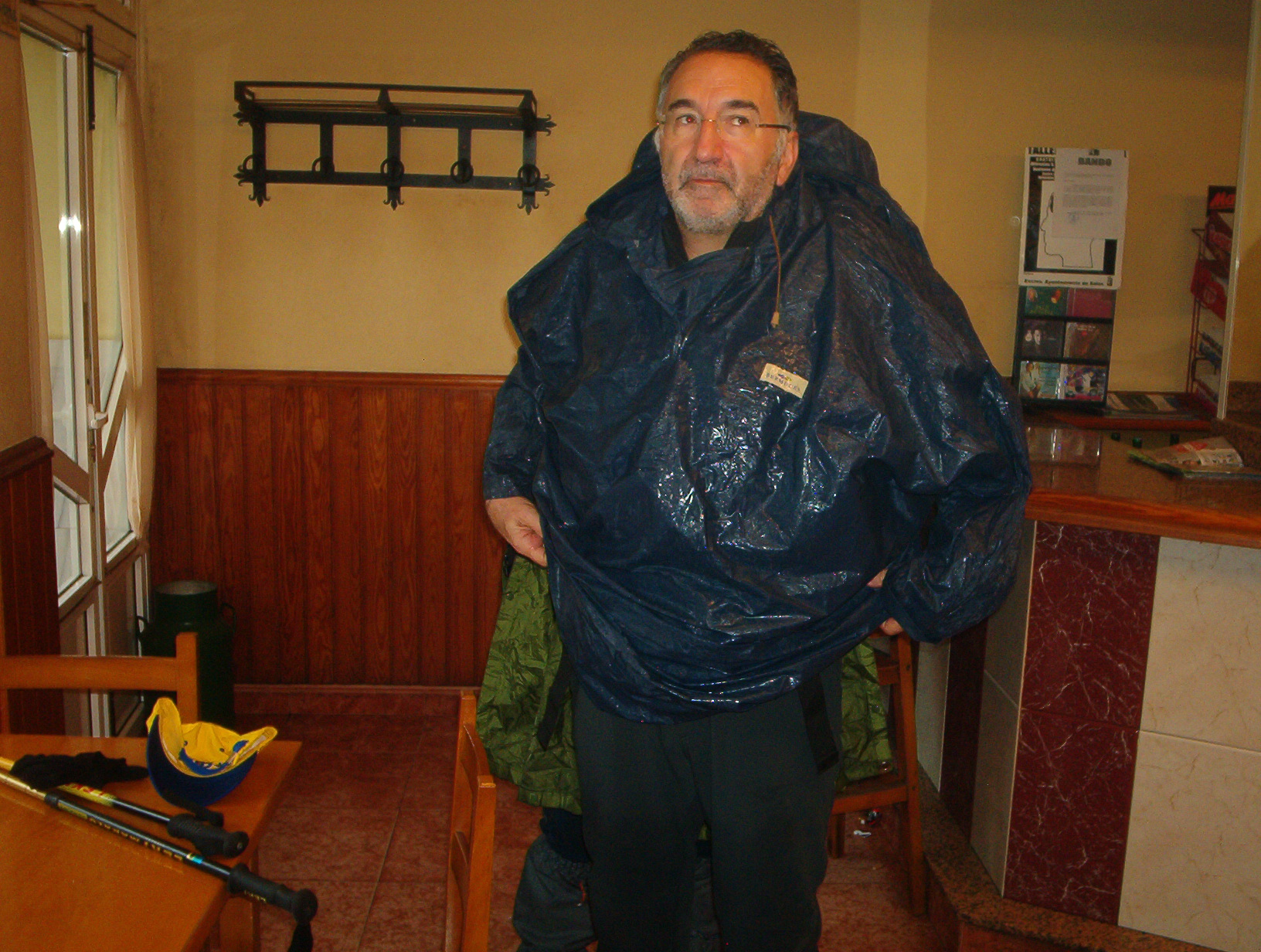 |
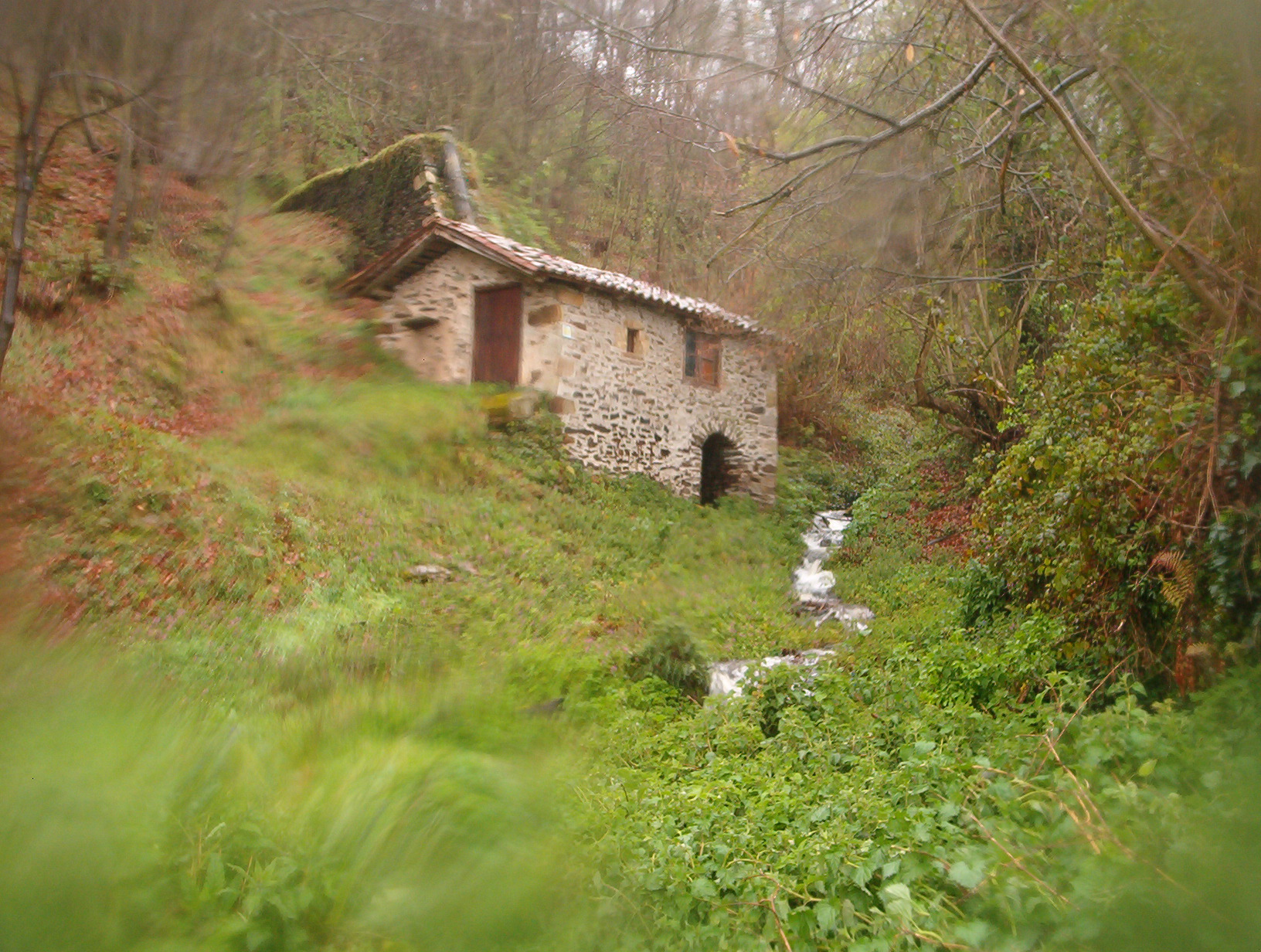 |
 |
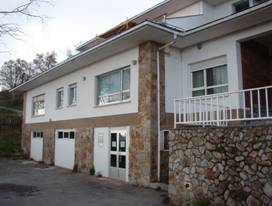 |
At the Albergue, I met a Madrileño named Jaime Perez, who walked with me from Tineo as far as Arzúa and became my friend. It is said that on the Camino, you receive many blessings. Sometimes, however, you don't fully understand them until later. We parted at Arzúa because I had reached my physical limits that day, and he needed to go on to meet his schedule. It wasn't until I was alone in the Arzúa Albergue, however, that I realized that walking with my friend had been one of truest of those blessings, making what might have been an exhausting ordeal into the best of my Caminos.
In any case, this day would have been lovely in better weather, but even walking under leaden skies and with constantly wet feet, it wasn't terrible. There is a bar with good coffee in El Espina and in Tineo itself, excellent food -- both pub style Asturian dishes and classier eats. You climb almost continually as you approach the town, from about 400 meters at Bodenaya up to about 750, but there are no particularly steep trails. The countryside, as always in this part of the Principality of Asturias, is beautifully green and intensely farmed.
| Tineo in the Hills | Tineo Town Hall | Asturian Gold Museum | Hospitalero (center at table) and Pilgrims |
|---|---|---|---|
 |
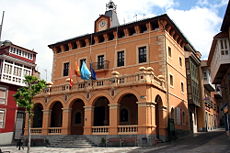 |
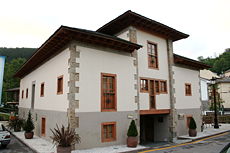 |
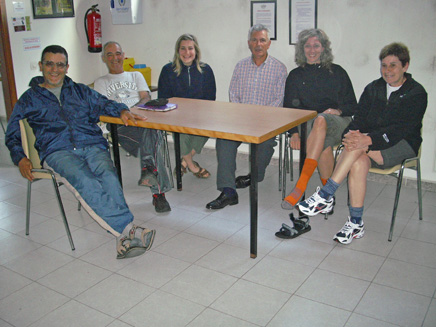 |
As you come up on Tineo, probably close to lunch time, the Camino passes a sports field and a small restaurant, La Casina, in the Cimadevilla area. It offers hearty Asturian food such as lentil soup with orejas, pork chops and fries, and sidra, which is just what you need after a difficult morning. For the uninitiated, orejas are pig's ears, which you may push to the side of the bowl and leave without embarrassment.
The Confraternity Guide suggests: "Good food at Los Tres Chicos Bar/Restaurant down behind the ALSA Bus Office". I looked it over but didn't go in because it looks like a greasy spoon diner. A better choice, still within pilgrim budgets, is the restaurant in the Hostal Don Miguel, just down the hill and around the corner from the Albergue. At least once before you leave Tineo, try the Plato de Embutidos assortment of smoked meats, including Tineo's famous chosco. The bar is good for breakfast too.
Leaving Tineo can be tricky. The waymarking brings you into the older part of town past a stone church. Here you need to turn right into the Travesía de la Torre to stay with the waymarking. The directional shell tile isn't visible from the uphill side of the intersection. Don't keep on down the hill into the old town.
 Previous
Previous
 Splash Page
Splash Page
 Next Page
Next Page